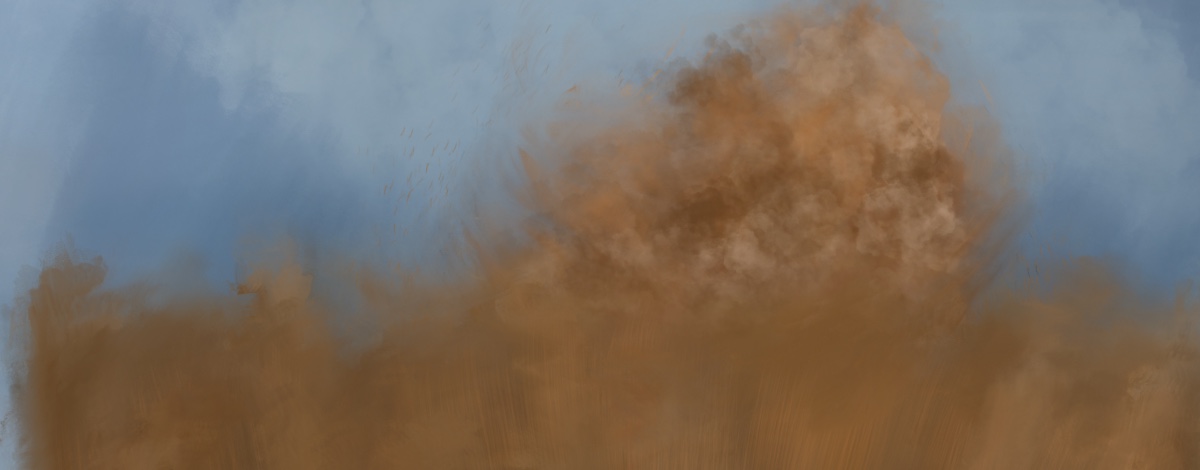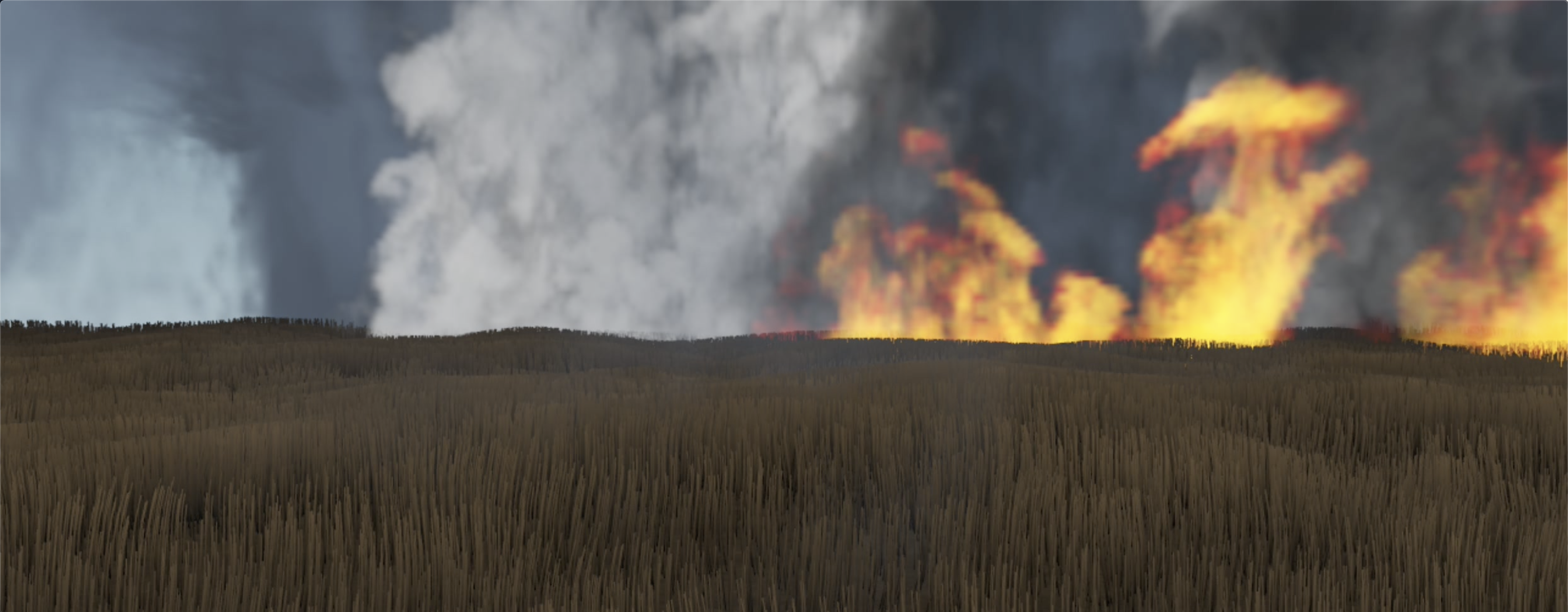A preview of the upcoming film.
All about Pixar's ‘Automaton’
Pixar’s Automaton short, directed by Krzysztof Rost and produced by Michael K. O’Brien, recently premiered as part of the SIGGRAPH 2020 Computer Animation Festival. While Pixar has a long history of releasing CG shorts, Automaton is perhaps a little different than most of the studio’s short film outings.

|

|
| Michael O'Brien Producer |
Krzysztof Rost Director |
The ideas behind Automaton
Rost says he was inspired by directors such as Terence Malick and Michelangelo Antonioni in coming up with ideas for Automaton. “What I find intriguing with their artistic approach in filmmaking is the poetry of how they show a story to the audience. In their films shots of landscape or a natural phenomena create this transcendental juxtaposition with human protagonists, almost spiritual experience.”
“For my short story,” continues Rost, “I wanted the main character to be a reality, a nature at its purest and seek out the hidden mystery behind its power of never ending process of destruction and creation, thus Automaton.”
A series of concept art frames for the film.
Rost’s creative process started with paintings and some early written treatment. It then evolved into a keynote, with diagrams of concept images, ideas for camera movements and space. “As for the sound,” he says, “I wanted to stay with natural sound effects for the first part of the film and slowly introduce musical score for more abstract parts of the film.”
An animatic was then built completely in Houdini. Each shot was planned out for composition and timing. The animatic would ultimately be used to map out how the team would execute the final rendered image.
The production pipeline
In Pixar’s normal production pipeline, lighting leverages the Katana and USD pipeline. On Automaton, however, with a majority of the work being done in the Effects department, the team looked to use Houdini for lighting as well.
Pixar’s lighting pipeline supports a coarse-to-fine approach. On a Pixar film a master lighter will create an overall lighting rig for a location and look. Packet lighting groups similar shots into smaller packets. Each individual shot is adjusted to finesse and enhance the details that are unique to the shot. For Automaton, James Gettinger built a similar pipeline and workflow using LiveSubnets devised by Hosuk Chang.
These LiveSubnets became a major part of making Automaton possible. O’Brien explains: “Houdini digital assets are great for creating and sharing contained functionality with a top-level set of parameters. However, we wanted to be able to work on a single Houdini scene with multiple artists. Hosuk Chang’s LiveSubnets allow for managed spaces inside of a Houdini file to be authored simultaneously by different artists. LiveSubnets also allow for a single subnet to be referenced in multiple files so work can be shared among shots as well.”
This animatic for Automaton was done in Houdini.
Ultimately, overall layering and basic lighting was done in a top-level LiveSubnet which defined a set of RenderMan ROPs that could be sent to the render farm. Packets were embedded inside of the master lighting group to provide a place for adjustments to similar shots.
Each packet contained a shot LiveSubnet for final shot tweaks. This allowed me the opportunity to work coarse-to-fine as I would on a feature film," details lighting TD James Gettinger, "We used RenderMan for render and Nuke to composite render passes, add optical effects, and to color grade. The lighting, rendering, and compositing workflow was modelled on Pixar's feature film pipeline."
Simulation challenges
Automaton contains its fair share of grass, fire and other simulations, which were handled in Houdini.
Tolga Goktekin was responsible for all the grass setup and simulation. “For the area close to the camera, he used vellum to solve high density simulation of grass,” explains Rost. “The grass in the middle-ground and background was handled by using a hair simulation. Right from the start of the project we agreed to share and use velocity fields from other simulations like dust devils or fire to advect the behavior of not only grass but embers and ash to make the final result as integrated as possible. Enrique Villa who worked on dust devils would pass the velocity field to Tolga Goktekin to advect the grass.”
Michael Hall was responsible for the fire and used a cluster system to solve a large scale simulation. “However,” notes Rost, “the overhead shot presented a unique challenge and we had to use a slightly different solution. It was all due to the camera position and how we wanted to present the fire line progression to be viewed from above. We still used the cluster system for the simulation but had to shape the fire at an angle to keep the original artistic vision in place for this shot.”
Fire shader test shots during production.
For grass advection, Michael Hall passed the burn signal to Tolga Goktekin from the ground to scale down the grass, change its shading, and add noise. “The same logic was implemented for ash and embers where Micheal’s fire velocity simulation data was used by Tobin Jones to move small particles around,” says Rost.
For a section of the film which deals with the aftermath of the fire, Cody Harrington generated a library of pyro simulations which he then placed, retimed and composed in shots with the smoke. Some of the smoke library was also re-used for other shots.
The abstract part of the film starts with falling rain, and here Enrique Vila used a flip solver. “Carl Kaphan and I tacked the rest of the abstract shots using a mixture of procedural animation, flip, and pyro solvers, and clustering techniques,” says Rost. “These shots were quite independent from each other and we didn't hvae to share any of the simulation byproducts like velocity fields."
New ideas
Rost and O’Brien describe their experience making Automaton as “refreshing, to be trying something so different and new compared to our normal work. The short was not like our traditional storytelling or aesthetic and was done using Houdini in different ways for us.”
“Artistically,” they add, “the later half of the short is very abstract and figuring out those images really plays to Houdini’s strengths both as a procedural toolset but also as a framework for being able to quickly pivot visually to different ideas.”











COMMENTS
OvidiuChiriac 4 years, 1 month ago |
Nice One.
Please log in to leave a comment.